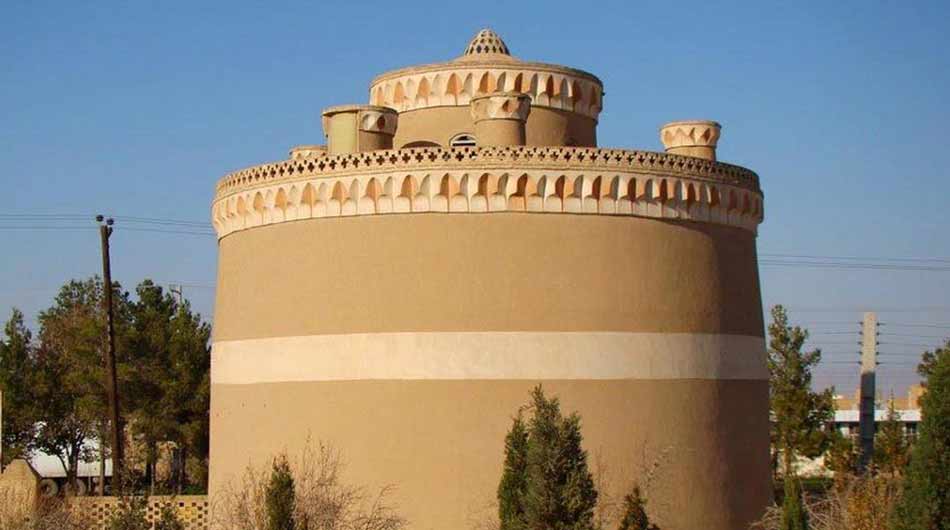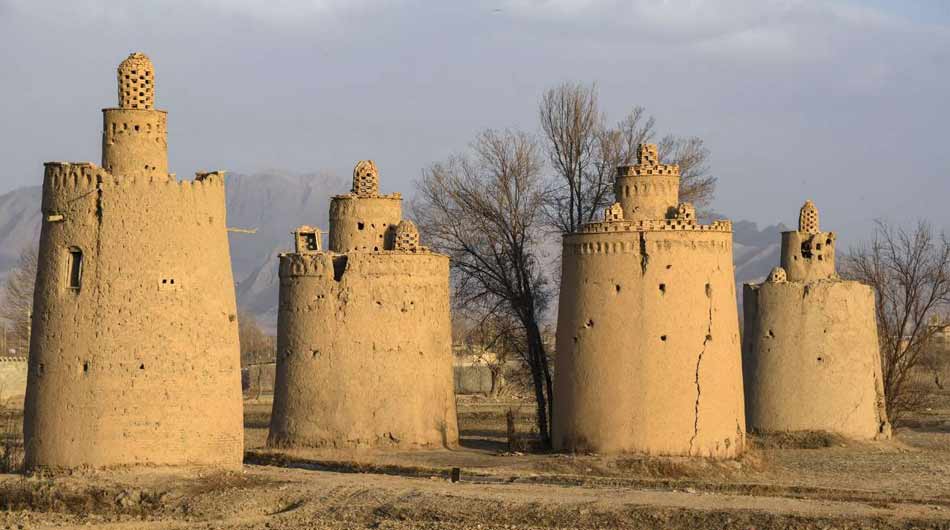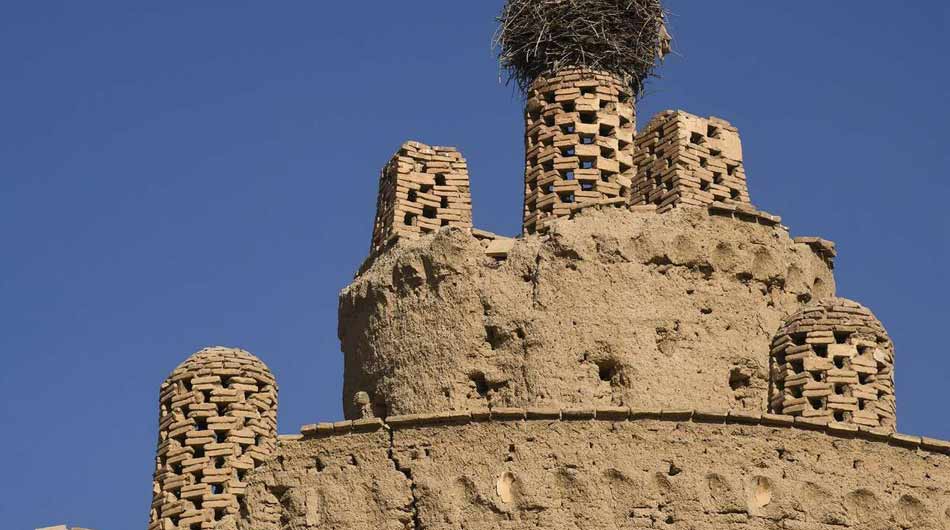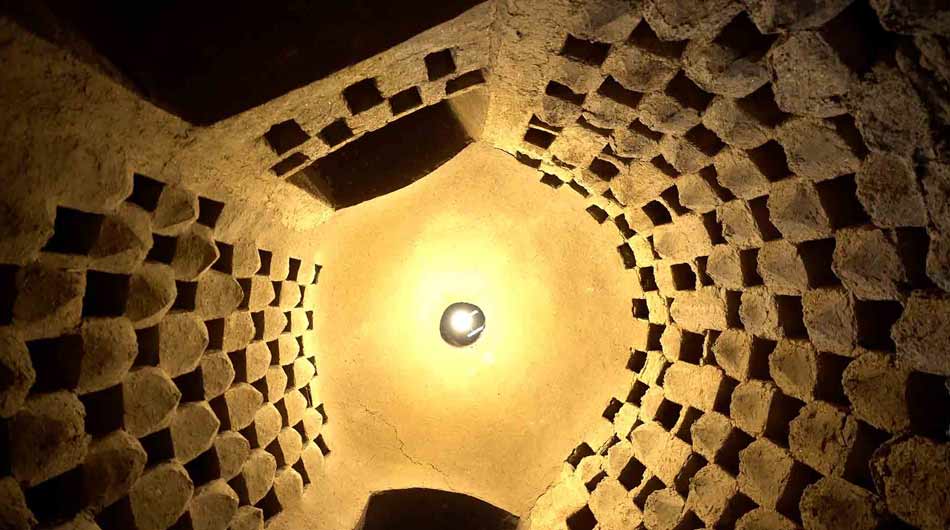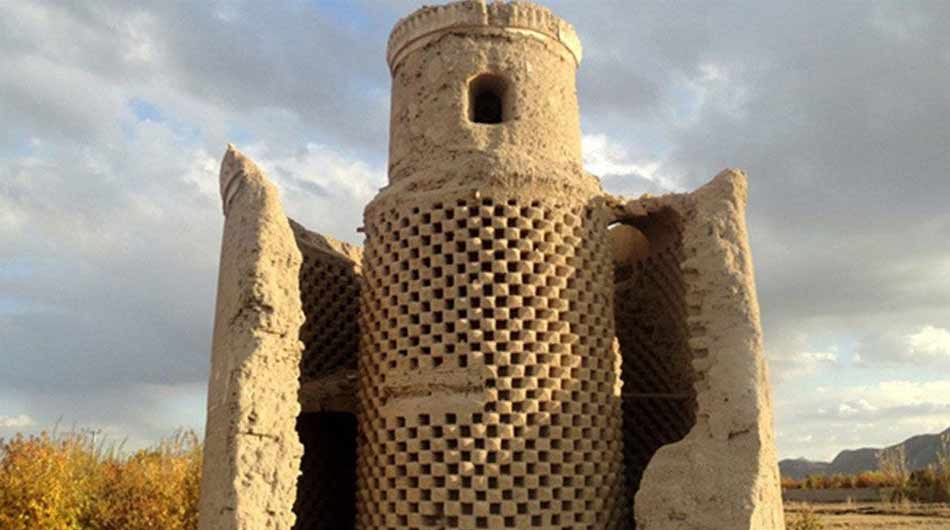Pigeon Towers
One of the most amazing monuments which are scattered on the suburbs of Isfahan are pigeon towers. There were more than 14000 pigeon towers on the plain of Isfahan, especially on the east and west of the city. Unfortunately a large number of these towers were destroyed, and vanished. For centuries Isfahan relied on pigeons to supply guano as fertilizer for the city’s famous fields of watermelons. The guano was collected in almost 3000 squat, circular pigeon towers, each able to house about 14,000 birds. Today they are unused, made redundant by chemical fertilizer, but more than 700 of the mud-brick towers remain in the city’s environs. The best place to see them is along the Zayandeh River south of the Ateshkadeh-ye Isfahan (Fire Temple).
During the 16th and 17th century, particularly around the time of the Safavid reign, the Iranian folks built a large number of towers to house pigeons. The pigeons were domesticated not for their meat (pigeon is especially revered in Islam), but rather for their droppings, which the locals collected and used to fertilize melon and cucumber fields. The Safavids had a particular liking for melons and consumed them in staggering numbers. Pigeon dung was thought to be the best manure for these crops, and the towers were built for the purpose of attracting pigeons to them so that they would nest in the towers and their dung could be harvested.
The environs of Esfahan are dotted with bizarre but very picturesque pigeon towers. In contrast to a European dovecot, which often housed pigeons to be used as meat, in Iran the pigeons were never eaten. Here pigeon towers were used as guano factories to produce fertilizers tor the melons that have always been the pride of the region. The guano was also used in the manufacture of gunpowder. The first traveler to report the pigeon towers in Esfahan’s environs was Ibn Batutta in the 14th century. Most of the structures, however, were built in the 17th century I when the city expanded and it became necessary to achieve the highest possible farm output on surrounding land.
The turrets are topped with domes with crevices so as to facilitate the access and exit of these birds, and guide them to their nests within this structure. Pigeons could fly comfortably inside the towers. Their droppings, which contain considerable amounts of elements like nitrogen, were collected in the tower and then used for farmlands that used to be located around the pigeon towers Nitrogen in pigeon droppings has an efficient role in the growth of plants and vegetables. These are distinct examples of Iranian architecture and have been built of brick and gypsum. At present there are over 200 such dovecotes in Isfahan province.
The turrets are topped with domes with crevices so as to facilitate the access and exit of these birds, and guide them to their nests within this structure. Pigeons could fly comfortably inside the towers. Their droppings, which contain considerable amounts of elements like nitrogen, were collected in the tower and then used for farmlands that used to be located around the pigeon towers Nitrogen in pigeon droppings has an efficient role in the growth of plants and vegetables. These are distinct examples of Iranian architecture and have been built of brick and gypsum. At present there are over 200 such dovecotes in Isfahan province.
Tags:Ateshkadeh-ye Isfahan, esfahan province, historical-place, Isfahan Province, landscape, Nature, Pigeon Towers, tour agency, tour operator, tour package, travel agency, travel company, اصفهان, برج های کبوتر

